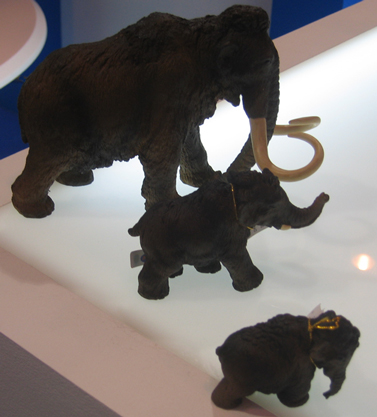More Fossil Evidence of Proboscidea found in South America
Elephant Fossils Found in Brazil
When people today are asked about elephants they associate these members of the Class Proboscidea (animals with trunks) with Africa and India. Those extant species that survive today are strongly associated with the African Savannah and the Indian sub-continent. However, the elephant lineage is long and the fossil evidence indicates that over the course of the Cenozoic these animals have existed in some form or other over much of the globe.
For example, the United Kingdom has its fair share of prehistoric elephant fossils, perhaps most notably the West Runton elephant. Partial remains including elements of the pelvis, skull and tusks of an enormous prehistoric elephant (Mammuthus trogontherii) were discovered eroding out of the sea cliffs at West Runton, near Cromer on the Norfolk coast in 1990. A complete excavation took place in 1995 and evidence of a ten tonne giant elephant was revealed.
A report from Brazil states that scientists have described a fossil tooth, that could only belong to an elephant in the Amazon jungle. The existence of elephants in South America in prehistory is not disputed, especially when one considers the excellent fossil material of Cuvieronius that has been found in Argentina and Bolivia. This elephant genus was originally named and described by that great French scientist and anatomist Georges Cuvier back in 1808. These fossils and those of another member of the Gomphotheridae – Stegomastodon (Stegomastodon platensis) indicate that a number of elephant genera were present in South America.
What is unusual about this fossil tooth from the Amazon, is that it has been dated to just 45,000 years ago, indicating the presence of elephants in South America during the Pleistocene Epoch, whereas the elephant fossils found to date are from the earlier geological Epoch, the Pliocene.
Scientists from Brazil say that this fossil tooth, proves the presence of pachyderms in South America as recently as 45,000 years ago. The tooth had been discovered in the early 1990s, around the time of the excavation work on the West Runton elephant, but it was only recognised as a tooth from an elephant after a close examination by a University student from the Federal University of Minas Gerais.
Commenting on the find, palaeontologist Mario Cozzuol of Federal University stated:
“Only elephants and capybaras have teeth with this kind of laminate structure, but those of capybaras are no longer than five centimetres, while the fossil measured twelve centimetres.”
Earlier fossil discoveries had indicated that ancient elephants were present in Central America during the Pleistocene, but there was an absence of evidence to indicate that elephants from North America had migrated further south. Both the African and Indian elephant are very much at home in enclosed forest environments, so the existence of ancient elephant species in the forested Amazon basin would not be entirely surprising.
A Trio of Papo Woolly Mammoth Models

A “Memory” of Elephants. The collective noun for a collection of elephants. A trio of Papo Woolly Mammoth models. Picture credit: Everything Dinosaur.
Picture credit: Everything Dinosaur
To view a model of a prehistoric elephant (Woolly Mammoth) and lots of dinosaur replicas: Papo Dinosaur and Prehistoric Animal Models.

